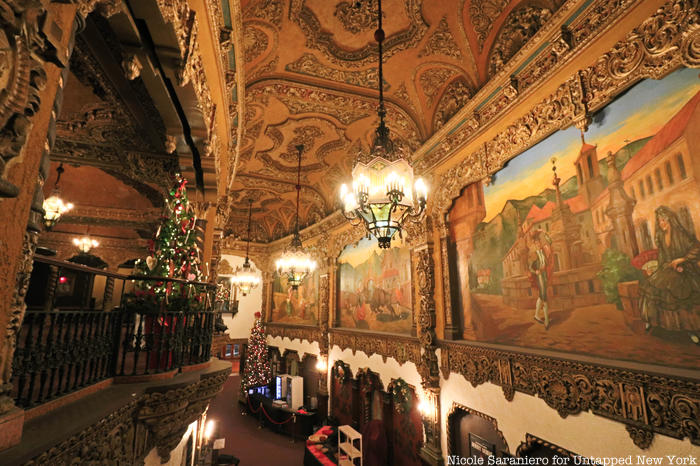
In 2019, the St. George Theatre celebrated its 90th Anniversary, but it suffered a long road to make it to that age. Owner Solomon Brill of the Isle Theatrical Company built the theater to attract top tier entertainment, like the vaudeville shows you would see in the movie-palaces of Manhattan, to the historic town of St. George on Staten Island’s North Shore.
After just under a year and a half of construction and $2 million dollars in cost, the theatre, along with an attached office complex, opened on December 4th, 1929. Despite the trying times it was born into, the St. George Theatre thrived for decades. By the mid-century however, like most large capacity theaters in the city, the St. George struggled to fill its seats. Untapped New York Insiders recently toured the theater and learned about its near destruction and brilliant revitalization.
The surrounding area is also going through a dramatic change, with the arrival of New York City’s only outlet, Empire Outlets, a 340,000 square feet destination for retail and dining that was designed by SHoP Architects. Empire Outlets is also worth a stop for the great views of New York Harbor and the Manhattan skyline. Untapped New York Insiders got to see some of the yet-to-open spaces on the behind-the-scenes tour of St. George.
Check out the secrets we discovered of the St. George Theatre!
1. The Balcony is a Feat of Engineering
The principal architect of the St. George was Eugene DeRosa, who was assisted by the “dean of Staten Island architects” and designer of the long-lost Ritz, Liberty and Victory theaters, James Whitford. Seeking to give patrons a luxurious experience, the St. George was equipped with many amenities including advanced cooling and heating systems, plush velvet seats, gilded balconies and grand staircases. The most impressive part the design however was the giant balcony.
At the time, the St. George’s balcony was one of the largest cantilevered balconies in the entire county. This engineering, which eliminated the use of beams and pillars, ensured that every seat has an unobstructed view of the stage. In total, the theater’s auditorium had 2,800 seats.






